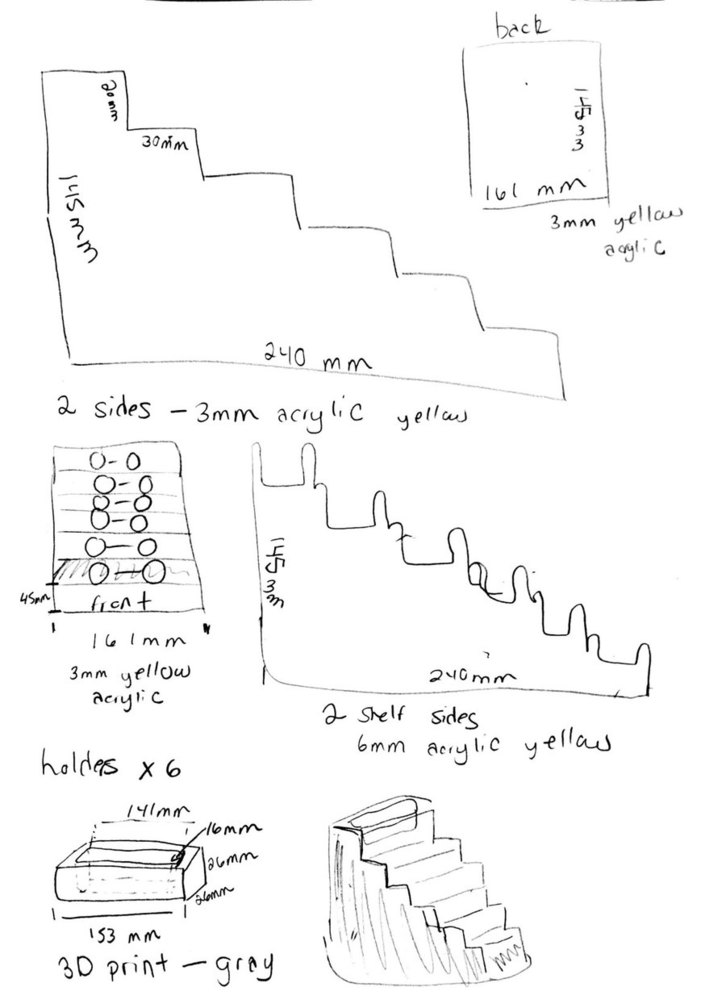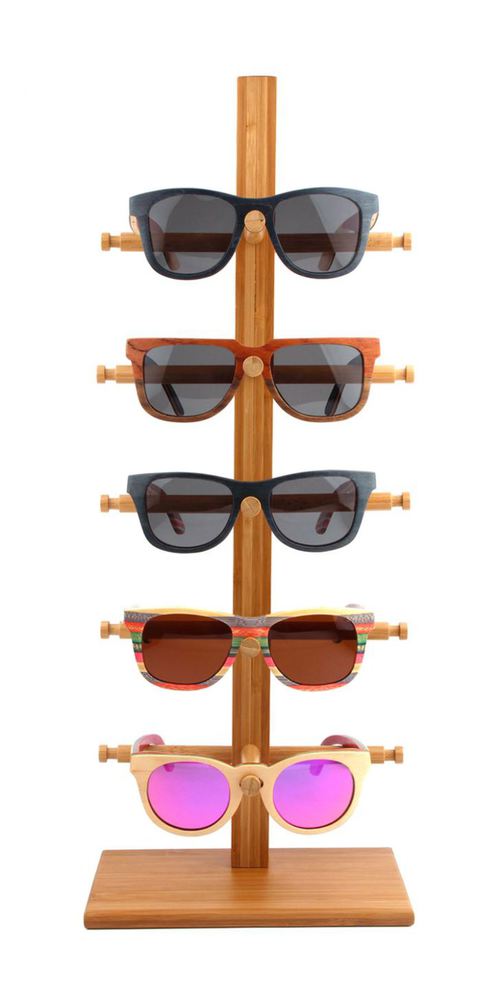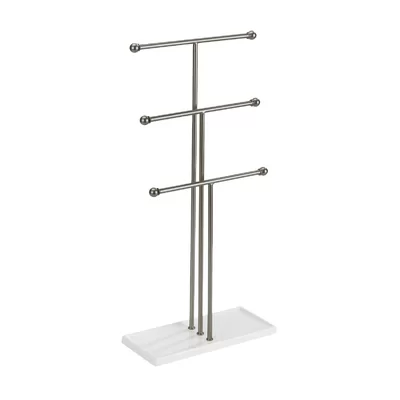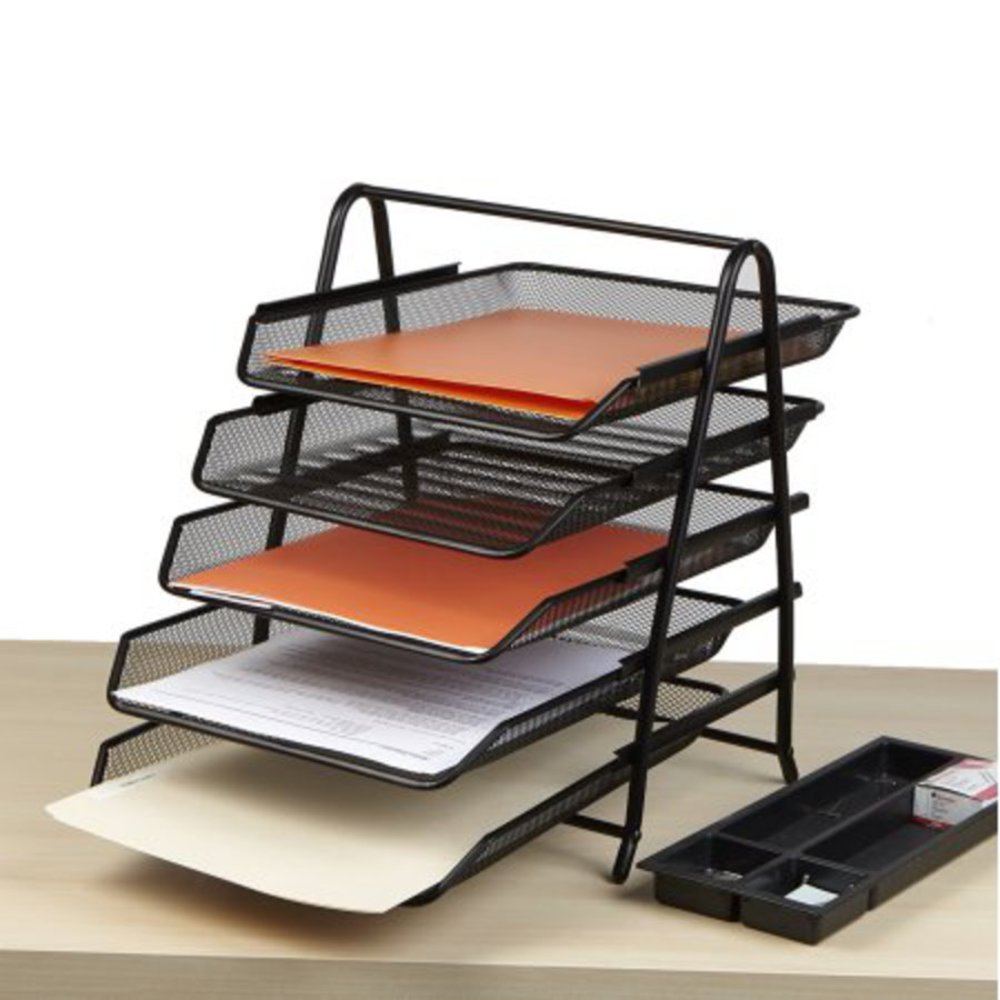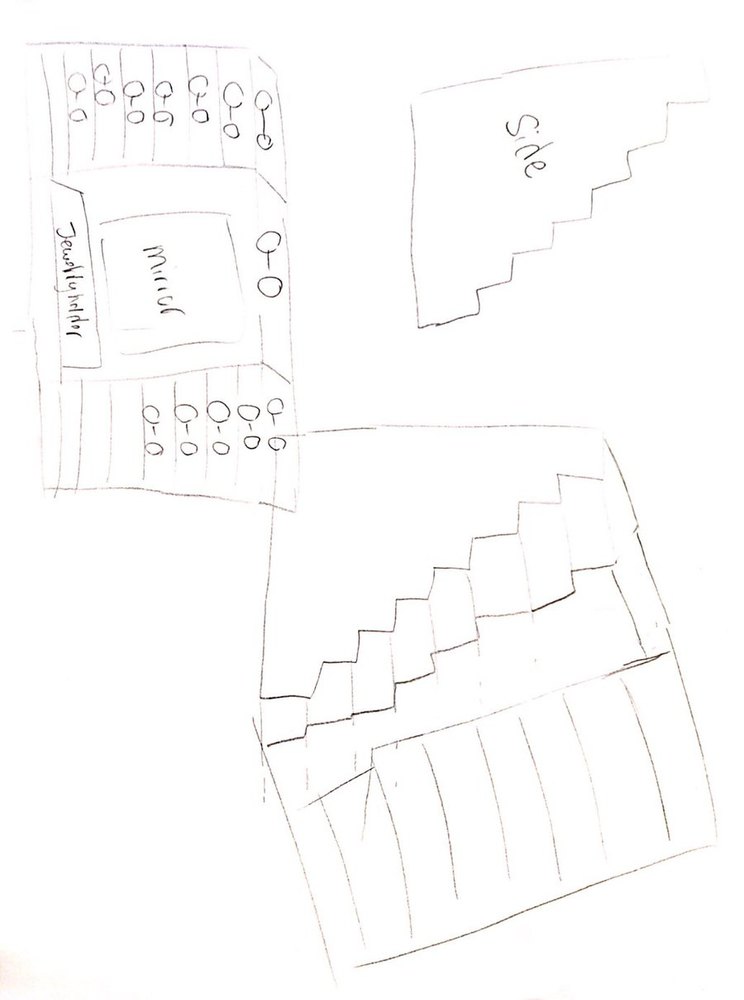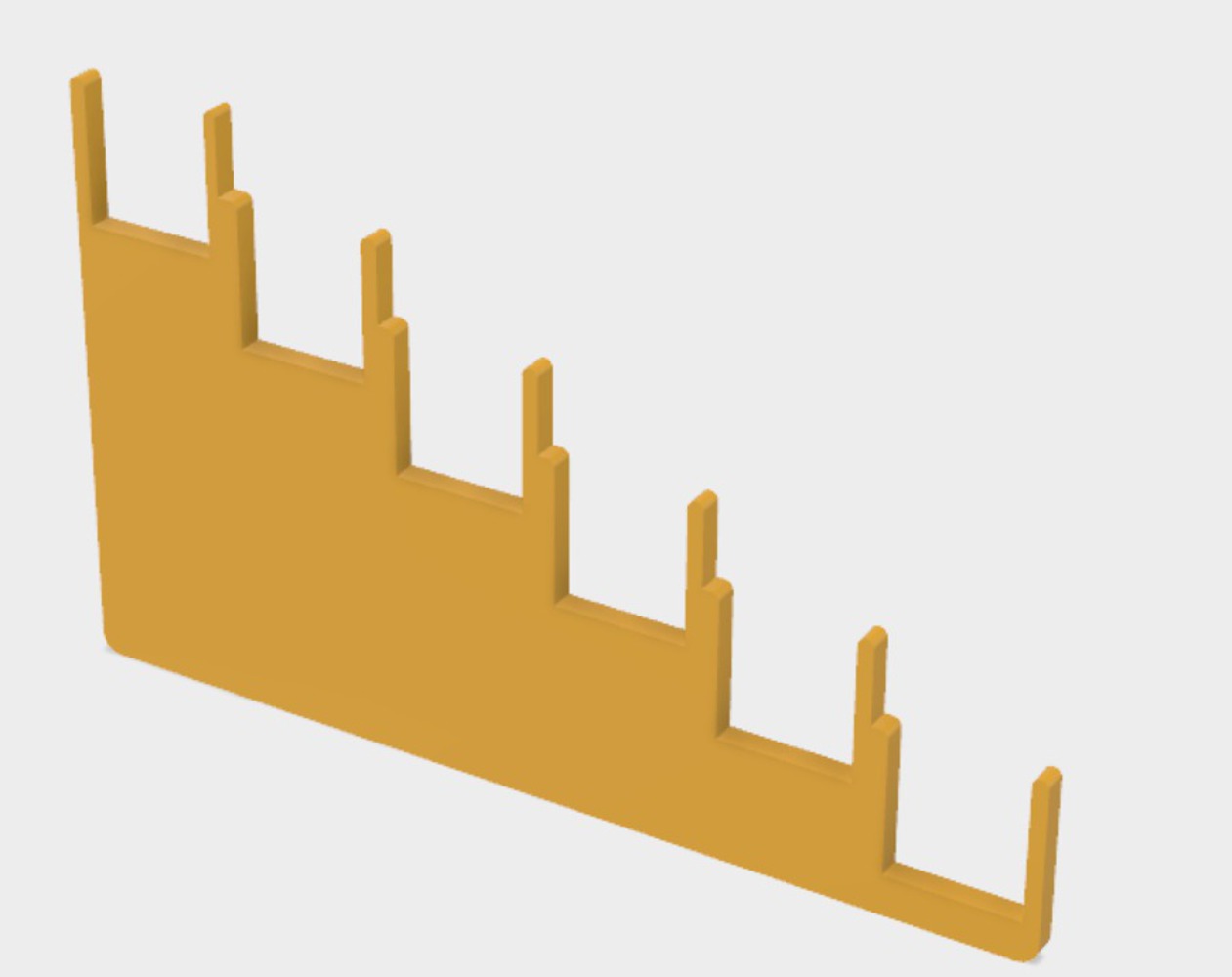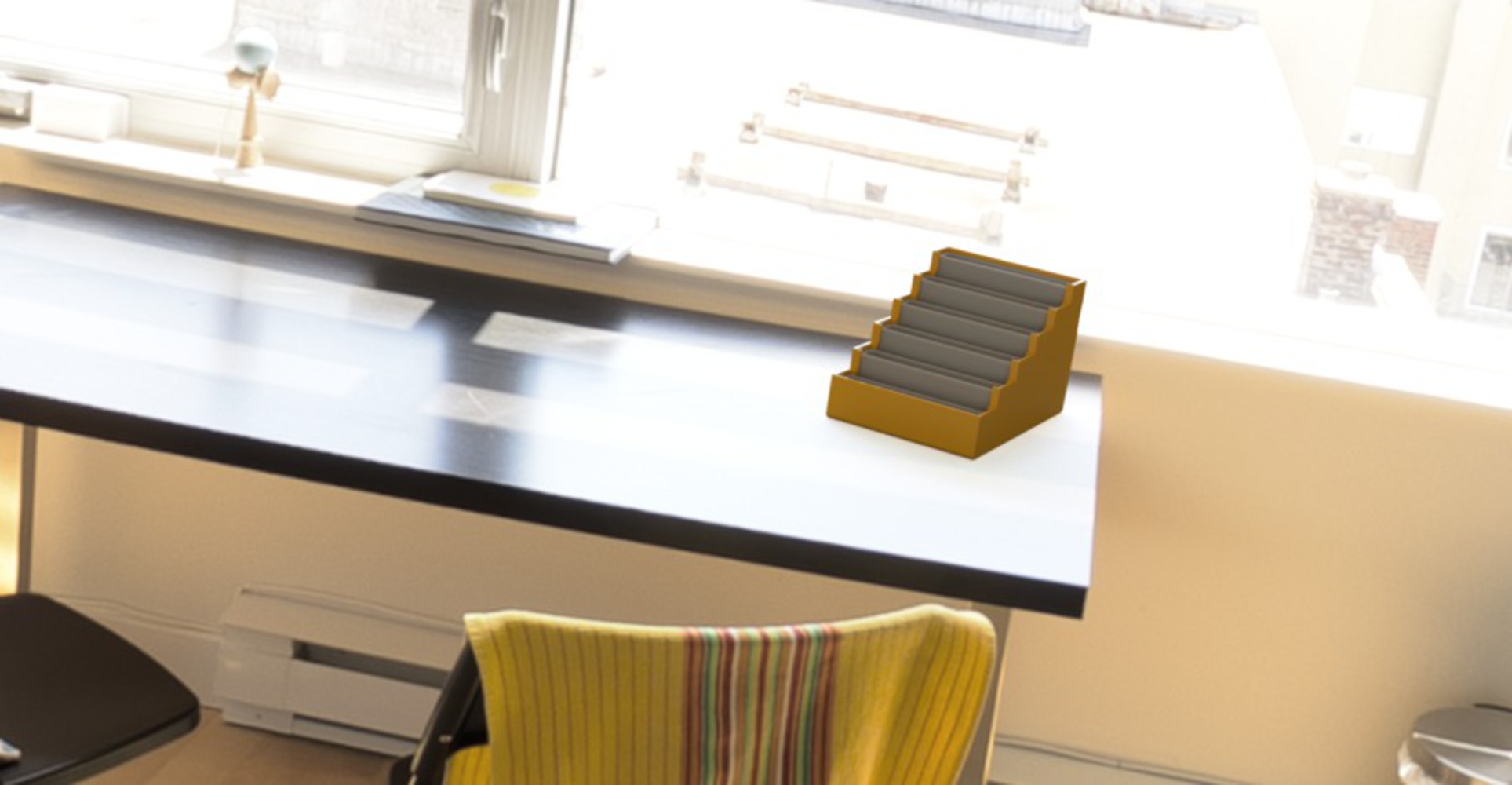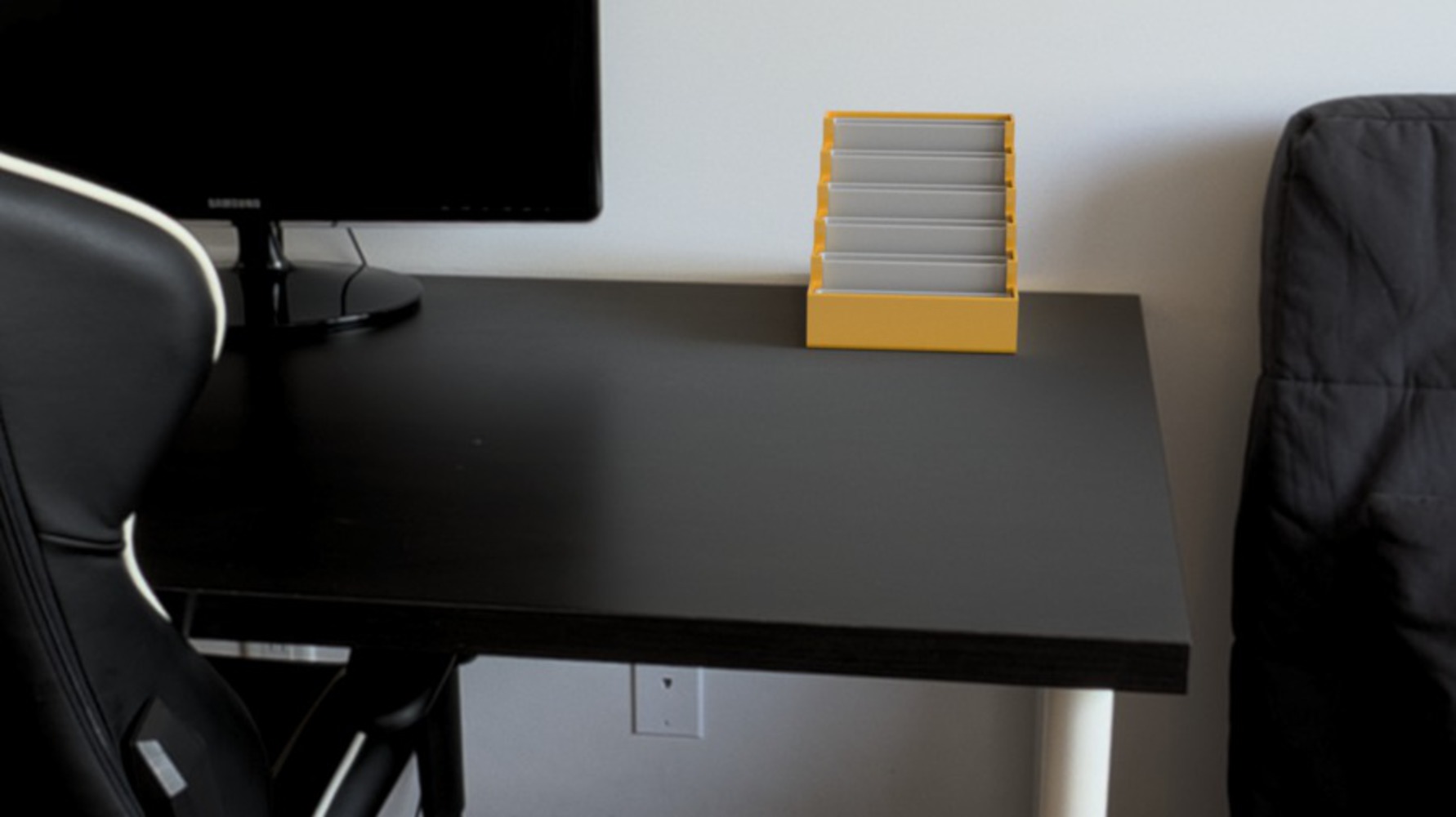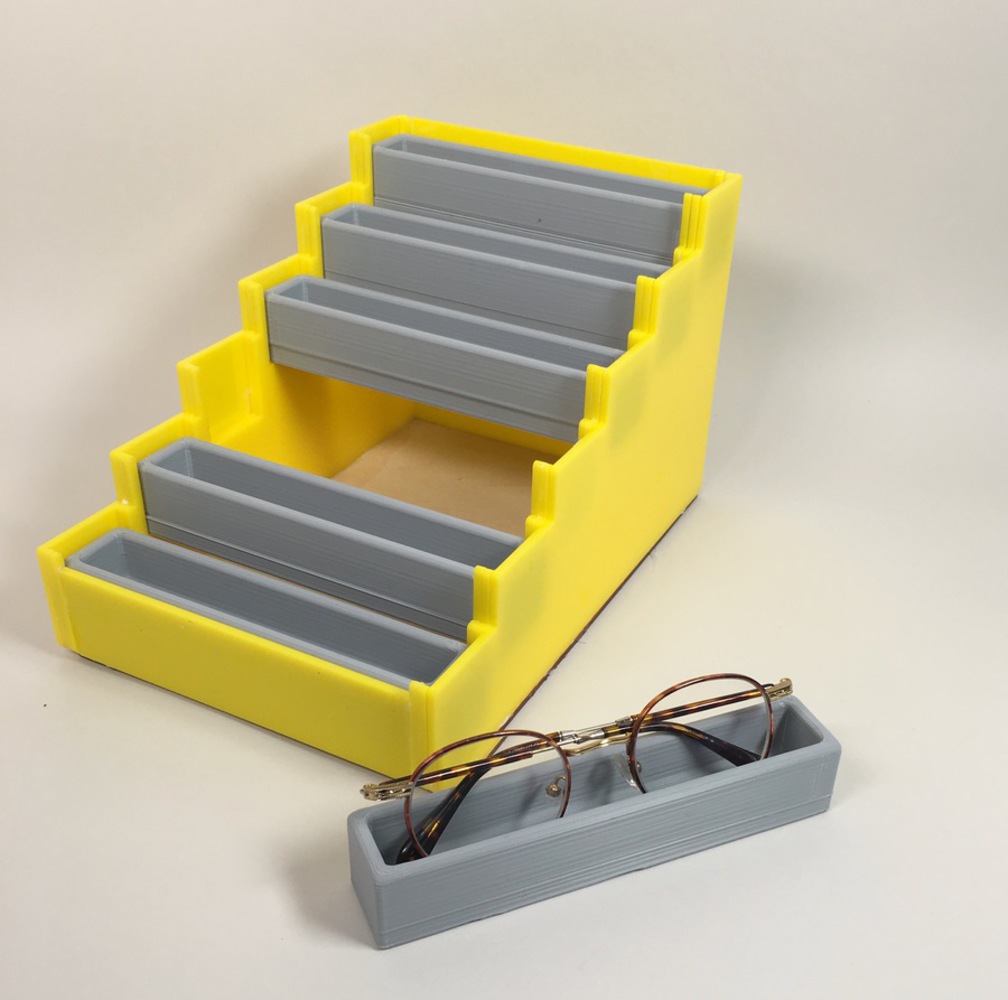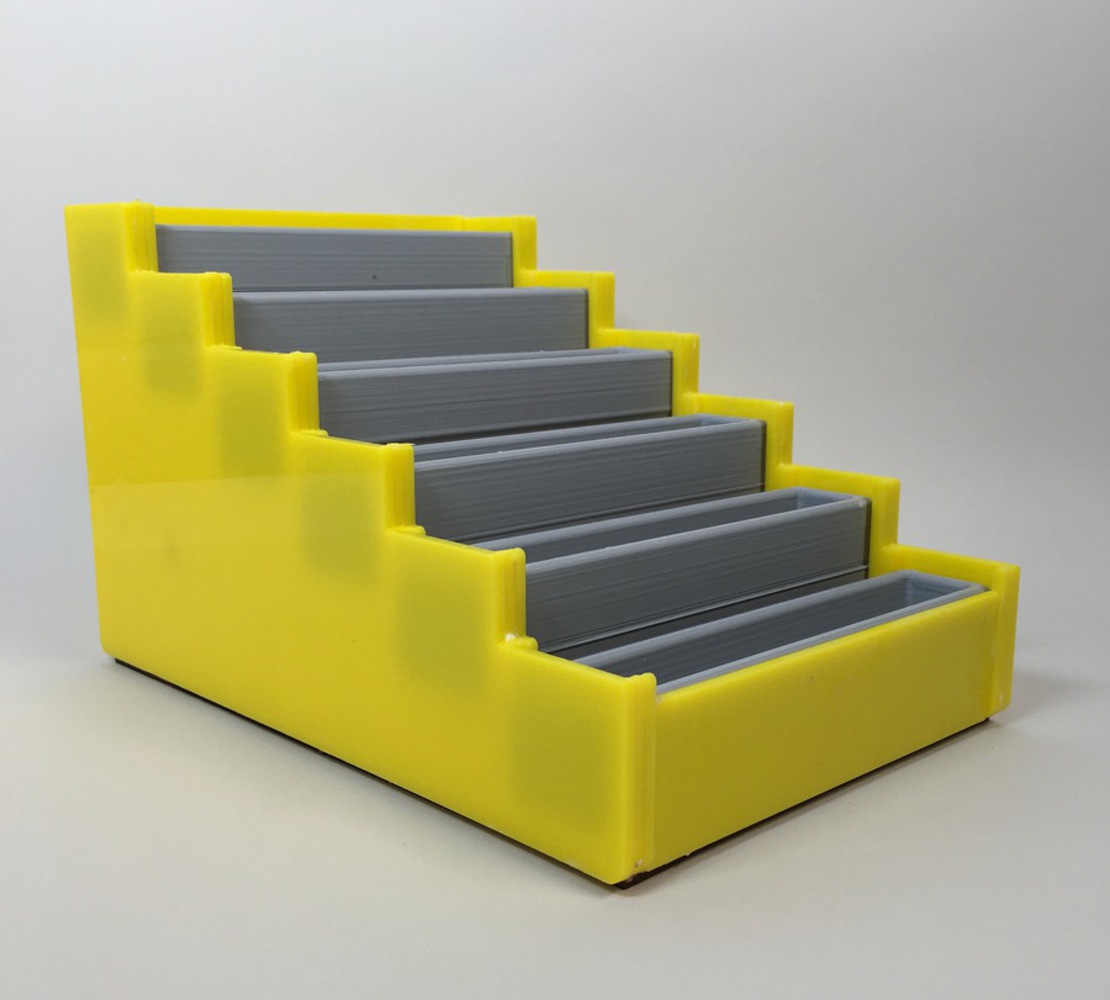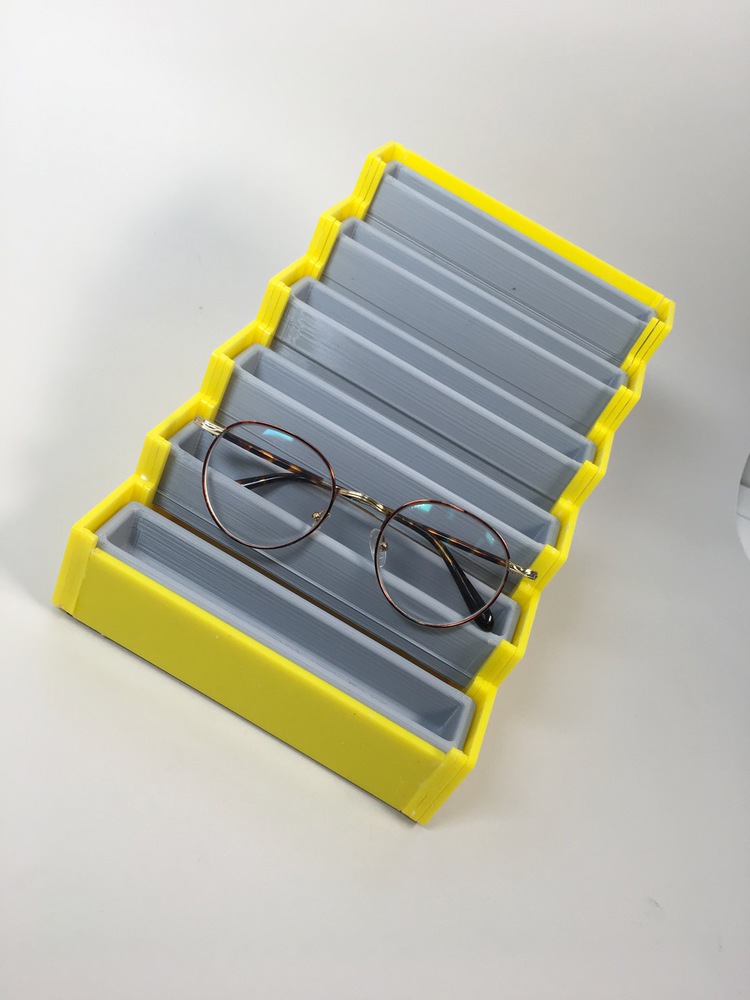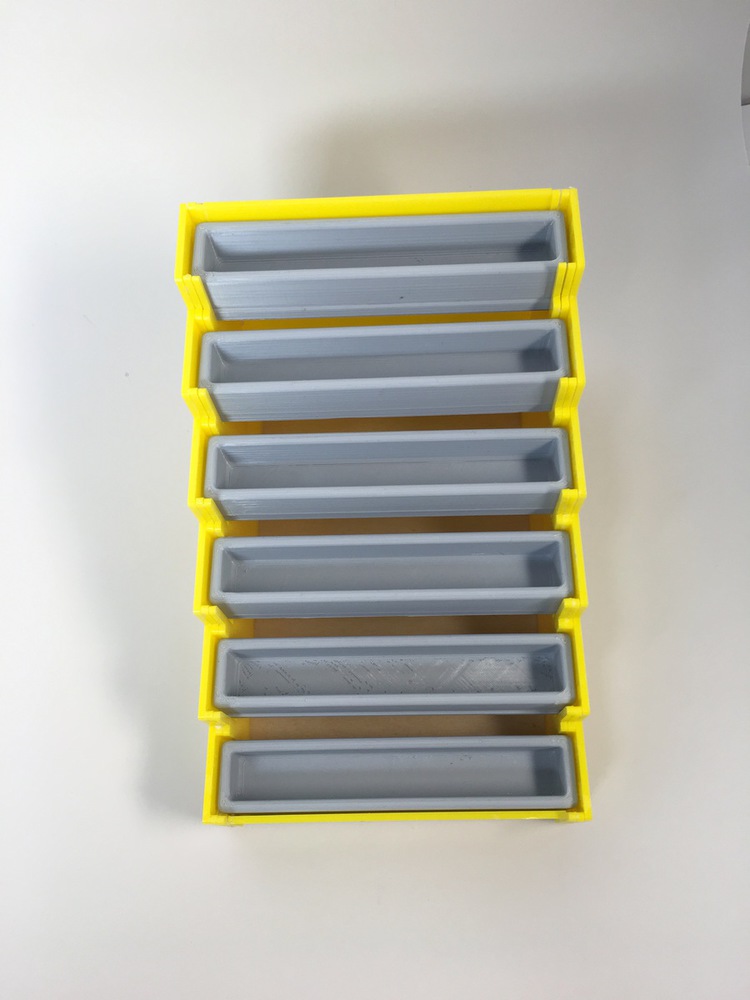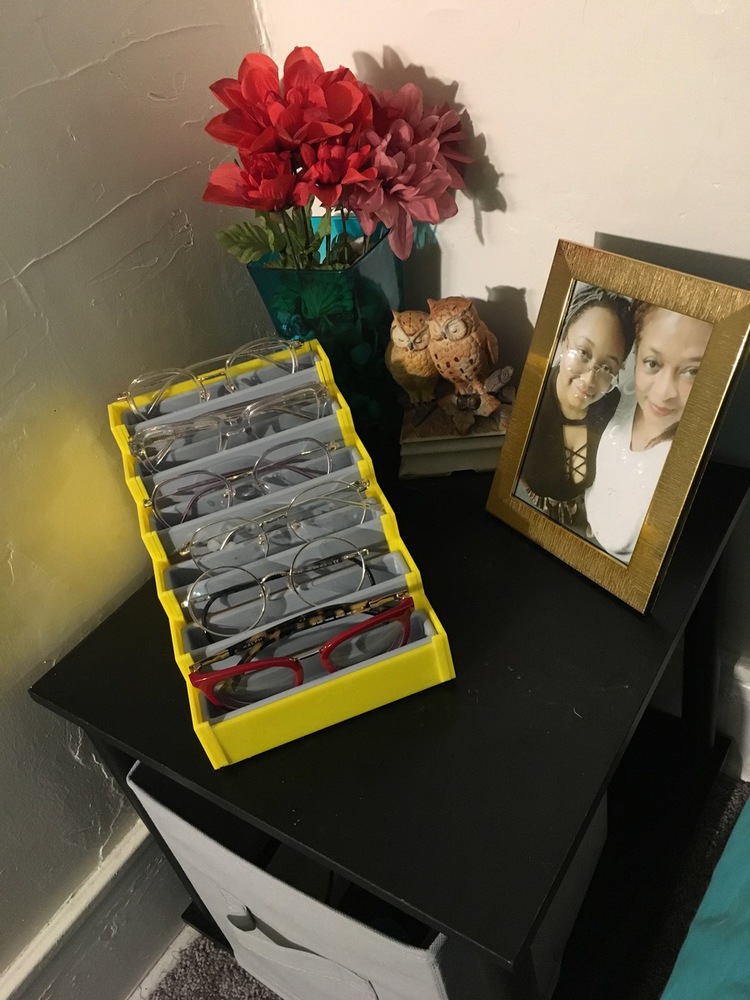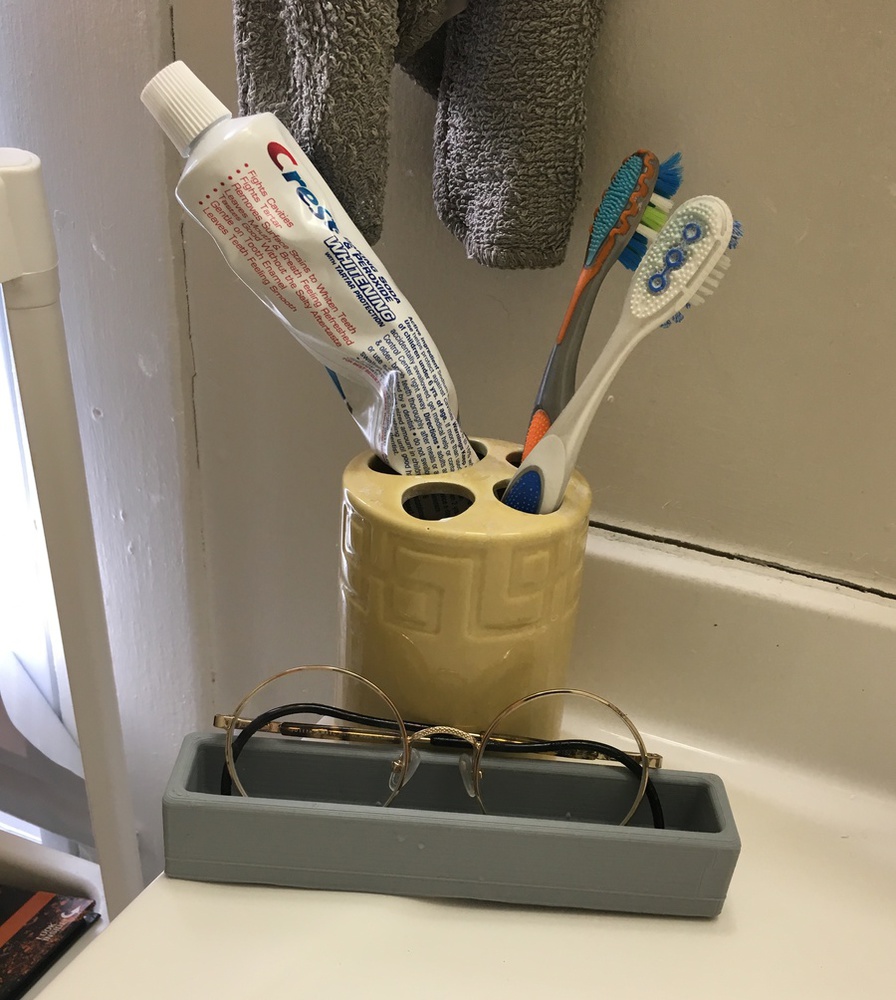My initial holder, however, was too large for the printer to do in one print. After splitting the design into three parts (two staircases, and the middle section), it was still too timely to create. In order to solve this problem, I changed my design to only print out the cups for the glasses. Switching to removable cups for the glasses also gives the holder more applications as the cups can be moved anywhere to hold a pair glasses or other items. I printed out 8 cups while I worked on recreating the frame through laser cutting.
While creating the frame, I changed my design to only 6 glasses to reduce the amount of space the holder would take up. Within Fusion360, I split the holder into five parts: front, back, sides, cups, and cutout sides. The cutout sides allow for the cups to sit neatly inside without having to create shelves for support.
After everything was printed out, I glued the pieces together, but discovered that gluing acrylic is not fun, and the weight of the cups was too much to keep the sides up by themselves. Since the yellow acrylic only came in 3mm thickness, and the design requires 6mm, I glued two cutouts together on each side. I had an extra piece of plywood, and used it to create a bottom support for the design.
